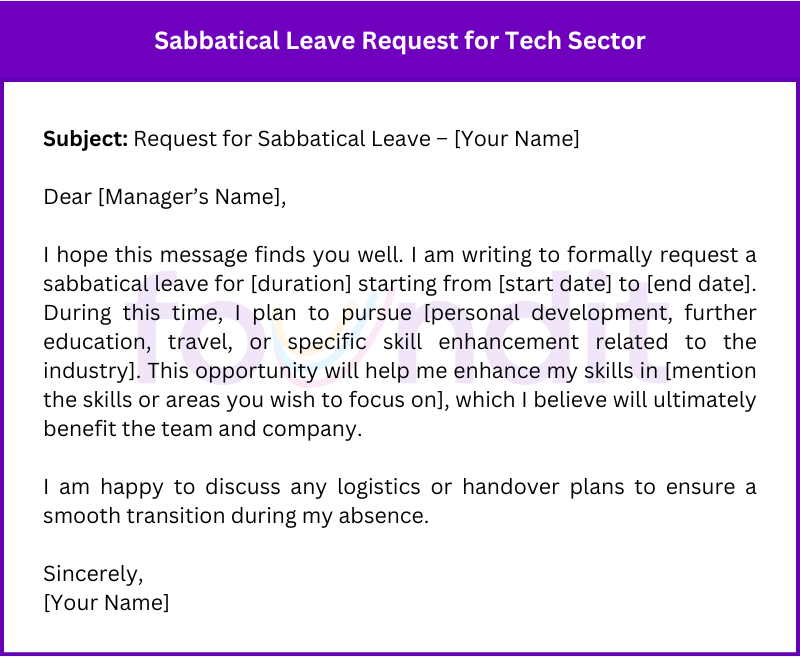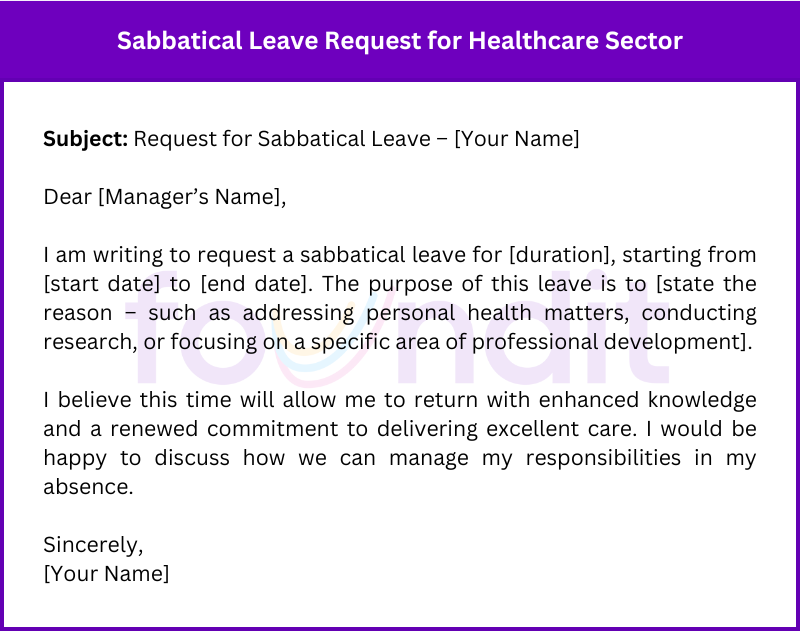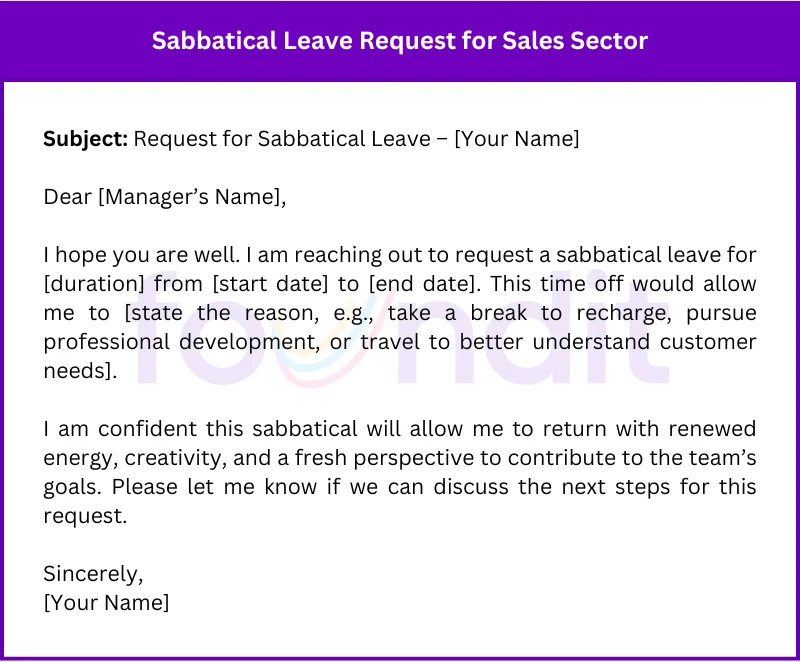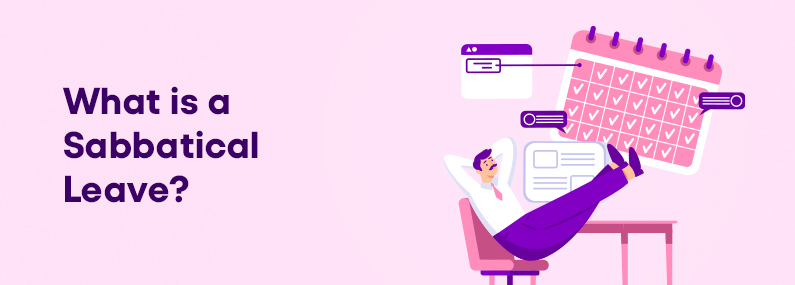Introduction
A sabbatical leave is an extended period away from work, typically ranging from a few months to a year. It allows employees to take a break from their regular responsibilities to pursue personal interests, travel, study, or simply rest. The concept of a sabbatical has its roots in academia, where professors were granted time off after several years of teaching to focus on research, writing, or other academic endeavours.
Over time, the idea of sabbaticals has spread to various industries, with many organisations offering employees the chance to step away from work to recharge or gain new skills. In today’s fast-paced world, a sabbatical is becoming more relevant, as it helps employees maintain a work-life balance, reduce burnout, and foster personal growth.
When employees return to their roles with renewed energy, it is seen as a way to improve long-term productivity and creativity. To know in detail about the sabbatical leave meaning, read on to:
1. What is the Purpose of a Sabbatical?
A sabbatical leave gives employees an extended break, offering them time to recharge, explore new interests, or focus on personal growth. Below are the main purposes of sabbatical leave:
1.1 Personal Growth and Development
A sabbatical allows people to learn new skills, pursue further education, or get additional job training. This allows them to grow personally and professionally. For example, someone could take classes, get a certification, learn a new language, or otherwise develop themselves.
1.2 Rest and Recovery
Sabbaticals give people extended time off to recharge and relax. This prevents burnout and fatigue that can happen after years of intense work. By taking a break, people can renew their energy and enthusiasm.
1.3 Creative Exploration
On a sabbatical, people can explore personal creative projects or professional research that they are passionate about but haven’t had time for. For example, they may write a book, produce art, do scientific experiments, or immerse themselves in meaningful work.
1.4 Travel or Volunteering
A sabbatical presents opportunities for new global experiences through travel. People may volunteer in another country and help local communities. This allows them to expand their worldview and contribute through service. They can gain perspective by immersing themselves in different cultures.
2. How Long is a Sabbatical?
| Type of Sabbatical | Typical Duration* | Variation Based on Company/Industry | Short-term vs Long-term |
| Academic Sabbatical | 6 months to 1 year | Often longer, especially in research or teaching roles. Some institutions offer up to 2 years. | Long-term: typically a year or more. |
| Corporate Sabbatical | 3 months to 12 months | Varies widely; some companies offer 3-6 months, while others may extend to a year based on seniority or role. | It can be both short-term or long-term, depending on company policy. |
| Personal Sabbatical | 1 month to 1 year | Often less structured, duration depends on personal need and employer flexibility. | It can be short-term (a few months) or long-term (up to a year). |
| Voluntary Sabbatical | 3 to 6 months | Common in sectors like tech or creative industries, with flexible policies. | Usually short-term, but can be extended in some cases. |
You May Also Like: How to Write a Leave Application for Office
3. Paid vs. Unpaid Sabbaticals
| Aspect | Paid Sabbatical | Unpaid Sabbatical |
| Payment | Employees continue to receive a portion or full salary during the sabbatical leave, often based on tenure or position. This ensures financial stability during the time off. | Employees do not receive a salary during the sabbatical period. The decision to take an unpaid leave is based on personal choice, with no compensation from the employer. |
| Availability | Paid sabbaticals are usually offered by larger companies or organisations with strong benefits programs, often to retain skilled employees or prevent burnout. | Unpaid sabbaticals are more common in smaller organisations or when an employer cannot afford to pay during the leave. It may also be self-initiated by the employee. |
| Duration | These are typically offered for periods ranging from 3 to 6 months. The duration often depends on the company’s policy and the employee’s role. | Unpaid sabbaticals are longer, sometimes up to a year or more, as there’s no salary-related constraint. Duration is more flexible and based on personal needs. |
| Purpose | Often granted for personal growth, research, skill development, or projects that benefit the employee and the employer. | Typically, it is for personal reasons such as travel, family matters, health recovery, or pursuing education. There’s less focus on benefiting the company directly. |
| Impact on Benefits | Employees on paid sabbaticals often retain benefits such as health insurance, retirement contributions, and other perks. | Depending on the company’s policies, benefits are usually paused or reduced during an unpaid sabbatical. Employees may need to arrange for coverage independently. |
| Employee Retention | Encourages employee retention, boosts morale, and fosters long-term loyalty. It’s seen as a perk that enhances work-life balance and reduces turnover. | This may lead to a potential loss of talent, as employees taking unpaid leave may seek permanent alternatives or be less likely to return. |
| Examples | Tech giants like Google, Intel, SAP, and universities offer paid sabbaticals as part of their employee development programs. | Common in non-profits, small businesses, or self-funded ventures where paid leave options are not financially feasible. Employees in academic or creative fields may also take unpaid sabbaticals. |
4. What are the Benefits of Taking a Sabbatical?
For employers, supporting sabbaticals can help retain top talent, foster innovation, and promote a positive work culture. Here are some of the main advantages of taking a sabbatical for both employers and employees:
4.1 For Employees
From professional learning to improved mental health, there are quite a few ways sabbatical leaves bring about benefits for employees. Here are the crucial pointers to keep in mind:
- Mental and physical health benefits
An extended break prevents burnout and gives people time to rest, relax, and recharge. This promotes better mental health and well-being. The time off also allows people to focus on physical health through activities like exercise, eating well, or getting medical checkups. People return refreshed, energised, and better able to manage stress.
- Professional growth and learning
Sabbaticals provide opportunities for skill-building through extended learning and development. People can take specialised training programs, earn certifications, pursue educational goals or expand their network, as this enables professional advancement.
- Enhanced job satisfaction and productivity post-sabbatical
Time away provides perspective and appreciation for one’s career. People often return with renewed passion, motivation and focus. With energy and drive regained, engagement and performance see an uptick. Taking a break leads to an improved job outlook over the long term.
4.2 For Employers
Sabbatical leaves can have several impacts on employers, too. Here are some of the aspects of a sabbatical leave that are significant for them.
- Increased employee retention and loyalty
Offering sabbaticals enhances talent retention, as workers feel valued by time off policies. Employees commit to returning to work, armed with fresh ideas and loyalty to the organisation for supporting their growth. Retention ensures critical expertise is maintained within the organisation.
- Opportunity for leadership development within teams
With an employee away, colleagues shoulder new responsibilities by taking the lead on key projects or initiatives. This empowers professional growth across the organisation and builds leadership pipelines within teams.
- Employee-return with new skills and fresh perspectives
Workers utilise sabbaticals to gain skills needed within the organisation, like cultural competency, language ability, domain knowledge or specialisations. They bring back innovative ideas and solutions. Diverse perspectives and experiences make teams more creative and responsive to organisational needs.
5. How to Plan for a Sabbatical?
Planning for a sabbatical requires careful consideration and preparation to ensure a smooth transition and make the most of the time away. Here are some key things to consider when planning for a sabbatical:
5.1 Preparation
Review your company’s formal sabbatical policy to understand eligibility terms, duration allowances, compensation rules, and required approvals. Meet with HR to clarify expectations and requirements. Discuss the proposed timeline and duration transparently with both HR and your manager. Gather their input on ideal leave parameters and transition plans.
Address any concerns directly. Finalise suitable start and end dates for your leave, allowing enough time to prepare. Use ongoing open dialogue and clear communications with all stakeholders from the outset to set mutual expectations and facilitate a smooth departure and eventual return.
5.2 Financial Planning
If taking unpaid leave, develop a budget to sustain yourself without paychecks for the entire sabbatical duration. Account for living costs, debt payments, out-of-pocket insurance premiums, retirement savings contributions, and major trip expenses. Meet with HR to understand which standard employee benefits will continue vs. require self-payment during leave.
Confirm associated costs that you can manage on your own. Ask which policies can resume automatically upon returning. Carefully projecting these costs and saving the required amount will enable you to fully focus on your break rather than financial constraints while away.
5.3 Setting Goals
Define what you aim to accomplish during the sabbatical for yourself and bring back value to the organisation. Outline clear goals.
5.4 Work Transition Plan
Months before starting your leave, thoroughly train colleagues handling your responsibilities. Clearly outline delegated duties, provide total access to critical systems and tools, and give needed contacts. Methodically complete outstanding deliverables and formally transition open work.
Organise essential project files and documents so successors can easily find the information required. Proactively introduce new points of contact to key clients to ease the transition.
Overcommunicating responsibilities and priorities will allow you to take leave with confidence that capable colleagues will maintain continuity.
People Also Read: Leave Application for Vacation in Office: Format & Samples
6. What to do During a Sabbatical?
| Activity | Description |
| Professional Development | Use the time to attend relevant courses, gain certifications, or undergo professional training to enhance career skills or pivot to a new field. |
| Personal Projects | Focus on personal interests such as writing a book, starting a blog, or working on a creative project like art, music, or photography that may not be related to your current job. |
| Volunteering | Contribute time to community service or global causes, helping non-profits, or working on humanitarian projects. Volunteering can offer fulfilment while making a positive impact. |
| Travelling | Travel to new destinations to experience different cultures, gain fresh perspectives, or simply recharge. Travelling can enhance creativity and broaden professional and personal horizons. |
7. How do you ask for a Sabbatical Leave?
Asking for a sabbatical leave requires a thoughtful approach and clear communication with your employer. Here are key steps for how to ask for a sabbatical leave:
- Timing: Consider the best time to request a sabbatical, such as after completing a major project or milestone or during a slower business period when your absence will have less impact.
- Building a Case: Present how your sabbatical aligns with personal goals (e.g. avoiding burnout, work-life balance) and company goals (e.g. retention, gaining new skills).
- Work Transition Plan: Assure your manager that all critical job responsibilities will be covered in your absence by cross-training team members, clearly documenting work, and identifying points of contact.
- Request Process: Formally request the sabbatical in writing, including a proposal outlining the above details and timing and the requested leave duration. Schedule a meeting with leadership to discuss and reinforce your request personally.
8. Can a Sabbatical Affect Your Career?
| Aspect | Positive Impact | Potential Risks |
| New Skills and Performance | A sabbatical can allow you to acquire new skills, certifications, or knowledge, enhancing your performance when you return to work and making you more valuable to your employer. | If the skills gained during the sabbatical are not directly applicable to your job, expectations might be mismatched upon returning, leading to potential role confusion. |
| Resume and Interview Value | A sabbatical can be attractive on your resume, showing that you took the initiative to grow personally or gain new experiences. In interviews, it can also demonstrate your proactive nature and ability to manage time off effectively. | Potential employers might question your employment gap, and they may view the break negatively, especially in fast-paced industries where continuity is highly valued. |
| Workplace Changes | Upon returning, you might bring fresh perspectives, innovative ideas, or solutions that help your team or company grow. Some organisations value this external experience. | During your absence, your workplace may undergo significant changes—new leadership, restructuring, or team dynamics—that could affect your role or responsibilities. |
| Re-adjusting to Routine | Returning after a sabbatical can result in higher engagement and creativity, as well as an improved ability to tackle challenges. You may feel reinvigorated and ready to contribute. | It can be difficult to readjust your previous work routine, especially if you’ve been away for a long time. You may experience difficulty reintegrating into team workflows or catching up with industry trends. |
9. Samples of Sabbatical Leave Request Email
Here are some sample sabbatical leave request emails from different sectors, showcasing various approaches to requesting time off. These samples can help you tailor your own request based on your specific situation:
9.1 For the Tech Sector
| Subject: Request for Sabbatical Leave – [Your Name] Dear [Manager’s Name], I hope this message finds you well. I am writing to formally request a sabbatical leave for [duration] starting from [start date] to [end date]. During this time, I plan to pursue [personal development, further education, travel, or specific skill enhancement related to the industry]. This opportunity will help me enhance my skills in [mention the skills or areas you wish to focus on], which I believe will ultimately benefit the team and company. I am happy to discuss any logistics or handover plans to ensure a smooth transition during my absence. Sincerely, [Your Name] |

9.2 For the Healthcare Sector
| Subject: Request for Sabbatical Leave – [Your Name] Dear [Manager’s Name], I am writing to request a sabbatical leave for [duration], starting from [start date] to [end date]. The purpose of this leave is to [state the reason – such as addressing personal health matters, conducting research, or focusing on a specific area of professional development]. I believe this time will allow me to return with enhanced knowledge and a renewed commitment to delivering excellent care. I would be happy to discuss how we can manage my responsibilities in my absence. Sincerely, [Your Name] |

9.3 For the Sales Sector
| Subject: Request for Sabbatical Leave – [Your Name] Dear [Manager’s Name], I hope you are well. I am reaching out to request a sabbatical leave for [duration] from [start date] to [end date]. This time off would allow me to [state the reason, e.g., take a break to recharge, pursue professional development, or travel to better understand customer needs]. I am confident this sabbatical will allow me to return with renewed energy, creativity, and a fresh perspective to contribute to the team’s goals. Please let me know if we can discuss the next steps for this request. Sincerely, [Your Name] |

Conclusion
A sabbatical, or extended paid leave, allows personal and professional growth during a career through new experiences, education, travel or passions. Sabbaticals promote work-life balance, prevent burnout, increase job satisfaction and retention, and boost creativity that can be applied upon returning. Carefully plan finances, work transitions and your leave vision. Approach employers with a compelling case for your sabbatical aligned to company needs. Whether a few weeks, months or a year, make the most of this rare gift of time. With intention and planning, sabbaticals can positively transform careers and lives.
Also Read: How to Write Leave Extension Letter
FAQs on Sabbatical Leave Meaning
Q1: What are the rules for sabbatical?
A1: Sabbatical rules vary by organisation but typically include eligibility after 5-7 years of service. Employees must request approval, with the length depending on company policy. Return to work is generally expected, and benefits may be paused during an unpaid sabbatical. Rules are outlined in the employee handbook.
Q2: How many times can you take a sabbatical leave?
A2: Many companies allow employees to vacation once every 5-7 years. Some may not have a formal limit on how often an employee can take a sabbatical.
Q3: What is the minimum period of sabbatical leave?
A3: There is a wide range when it comes to minimum sabbatical duration. Some companies offer short sabbaticals of 4-8 weeks, while others require a minimum of 3 months or longer.
Q4: What is the purpose of a sabbatical?
A4: Typical sabbatical goals include recharging and preventing burnout, allowing time for education or skill development, travelling and pursuing personal passions, or working on long-term projects.
Q5: Is a sabbatical paid or unpaid?
A5: Sabbaticals can be either paid or unpaid. Paid sabbaticals are typically offered by larger organisations as part of employee benefits, with full or partial compensation. Unpaid sabbaticals are more common in smaller businesses, where financial constraints prevent offering pay during the leave, though they still provide valuable time off.




